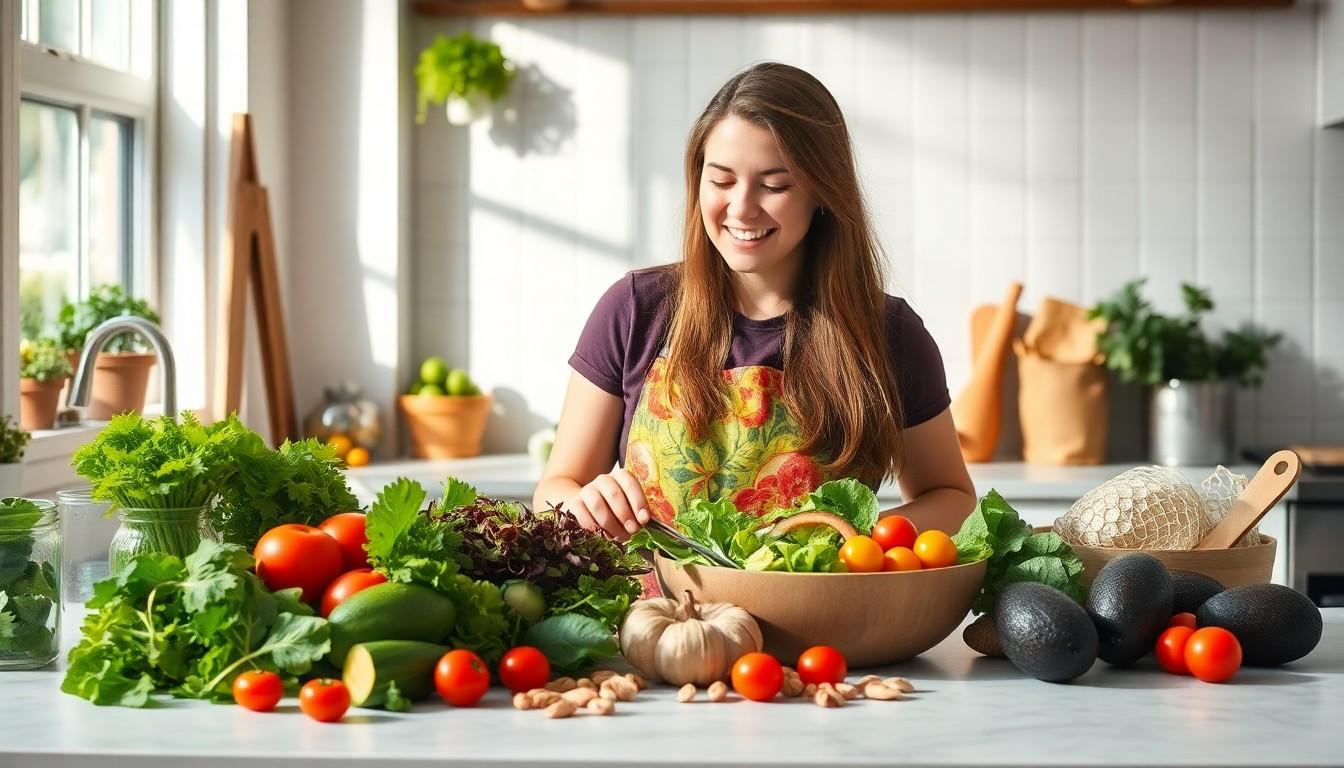Physical Address
304 North Cardinal St.
Dorchester Center, MA 02124

In a world where fast food reigns supreme and microwave meals have become a way of life, embracing unprocessed foods might feel like a rebellious act. But fear not! Easy unprocessed food recipes are here to rescue taste buds and health without requiring a culinary degree or hours of prep time. Picture this: delicious meals that don’t come with a side of guilt or a list of ingredients you can’t pronounce.
Easy unprocessed food recipes offer numerous advantages for both individuals and the planet. Embracing these recipes promotes a healthier lifestyle and reduces environmental strain.
Consuming unprocessed foods boosts nutrient intake. Whole ingredients like fruits, vegetables, nuts, and seeds provide essential vitamins and minerals. Eating these foods improves digestion and enhances energy levels. Many unprocessed meals contain healthy fats, fiber, and protein, supporting weight management. These recipes also reduce the consumption of added sugars and unhealthy additives, fostering overall well-being. Most importantly, incorporating unprocessed foods into daily meals can lower the risk of chronic diseases, including heart disease and diabetes.
Choosing easy unprocessed food recipes positively affects the environment. Selecting local and seasonal ingredients reduces carbon footprints associated with transportation. Supporting small farms promotes biodiversity and helps maintain soil health. Unprocessed foods often require less packaging than processed alternatives. By minimizing waste, individuals contribute to a healthier ecosystem. Committing to unprocessed recipes encourages a sustainable lifestyle and raises awareness about food choices. This shift not only nourishes the body but also nurtures the planet.

These recipes focus on unprocessed ingredients, making it easy to prepare healthy meals at home. Each recipe requires minimal time and effort, allowing for quick, nutritious options.
Oatmeal topped with fresh fruits provides a hearty start to the day. Chia seed pudding pairs easily with almond milk and sweeteners like honey or maple syrup. Smoothies made from spinach, bananas, and nut butter deliver essential nutrients quickly. Greek yogurt mixed with berries and a sprinkle of nuts offers protein and satisfying crunch. Whole grain toast with avocado brings healthy fats and fibers into the morning routine.
Quinoa salads filled with chopped vegetables and herbs create a refreshing midday meal. Wraps made from lettuce, turkey, and hummus serve as a low-carb alternative to traditional sandwiches. Vegetable soups made from seasonal produce can be prepared and stored for convenience. Brown rice bowls topped with steamed broccoli and grilled chicken provide a balanced option. Lentil salads with diced tomatoes and onions offer protein and fiber in one dish.
Stir-fried vegetables and tofu create a quick one-pan solution. Grilled fish seasoned with herbs and served with a side of mixed greens delivers a light evening meal. Vegetable pasta, using zucchini noodles, adds freshness and flavor to dinner. Baked sweet potatoes topped with black beans and salsa offer a filling and healthy choice. Chicken roasted with root vegetables combines flavors and nutrients in a simple recipe.
Choosing unprocessed foods requires thoughtful preparation. Simplifying the process can make healthy meals enjoyable and accessible.
Select fresh, seasonal produce for maximum flavor and nutrition. Prioritize organic options when available, as they avoid synthetic pesticides and chemicals. Incorporate a variety of colors in fruits and vegetables; this enhances dietary diversity. Include whole grains like brown rice and quinoa, as these provide sustained energy. For protein, opt for legumes, nuts, and seeds; these elements are rich in nutrients. Ensure minimal processing by checking labels for additives and preservatives. Focus on local farmers’ markets to find quality ingredients that support the community.
Implement meal planning to reduce cooking time during the week. Prepare a shopping list based on chosen recipes to ensure all necessary ingredients are readily available. Consider batch cooking; preparing larger quantities of staples allows for quick meal assembly later. Mix and match leftover items to create new dishes, preventing food waste and saving money. Reserve one day a week for meal prep; this strategy promotes efficiency and encourages healthy choices. Organize meals by categories, ensuring a balance of proteins, carbs, and fats throughout the week.
Storing unprocessed foods properly maximizes freshness and nutrient retention. Utilize airtight containers to keep drying ingredients like grains and nuts safe from moisture and pests. Refrigeration enhances the shelf life of perishable items such as fruits, vegetables, and dairy products.
Consider using glass jars for storing foods like oats and seeds, which allows easy visibility and access. Keeping herbs in a glass of water or wrapping them in a damp paper towel extends their freshness.
Freezing is an effective method for preserving unprocessed ingredients. Fruits and vegetables maintain their quality when blanched and then frozen in portion-sized bags. Lean proteins, including chicken and fish, also freeze well, helping users avoid spoilage.
Labeling containers with dates ensures food is consumed within optimal timeframes. Storing foods in a cool, dark environment prevents degradation from light and heat.
Plan meals based on perishable items first to minimize waste. Using a first-in-first-out approach allows users to prioritize older items and use them before newer ones.
Regularly checking pantry inventories helps identify items needing consumption soon. Knowing how to store and preserve unprocessed foods ultimately contributes to a healthier kitchen environment and reduces food waste.
Embracing easy unprocessed food recipes can transform the way individuals approach their meals. By focusing on simple and nutritious ingredients, it’s possible to create delicious dishes that nourish both the body and the planet. These recipes not only enhance health but also support sustainable practices that benefit local communities.
With thoughtful meal planning and smart ingredient choices, anyone can enjoy the flavors and benefits of unprocessed foods. Making small adjustments in the kitchen can lead to significant improvements in well-being. It’s time to savor the goodness of whole foods while fostering a healthier lifestyle and a more sustainable future.